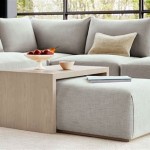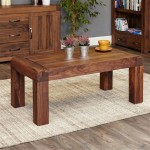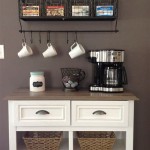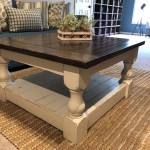Lift Top Coffee Table Ideas: Functionality and Style Combined
The lift top coffee table has surged in popularity as a versatile furniture piece, offering a blend of style and practicality for modern living spaces. Unlike traditional coffee tables, the lift top variant features a mechanism that allows the tabletop to be elevated, transforming it into a comfortable surface for dining, working, or engaging in leisure activities. This adaptability makes it an ideal solution for small apartments, multi-functional rooms, or anyone seeking to maximize their living space. The following article explores various lift-top coffee table ideas, highlighting design considerations, functional benefits, and stylistic options.
Understanding the Mechanics of Lift Top Coffee Tables
The core functionality of a lift top coffee table lies in its lifting mechanism. Several types of mechanisms exist, each with its own advantages and disadvantages. One common type utilizes a spring-loaded hinge system. This design typically involves a simple upward lift, with the springs assisting in the elevation and providing stability in the raised position. These mechanisms are generally cost-effective and relatively easy to maintain. However, the range of motion might be limited, and the table may exhibit some wobbling if the mechanism is not robust.
Another prevalent mechanism involves a gas-strut system, which offers a smoother and more controlled lifting action. Gas struts provide variable resistance throughout the lifting process, allowing for a gentle and almost silent transition between the lowered and raised positions. This type of mechanism tends to be more durable and capable of handling heavier loads, making it suitable for tables intended to support laptops, meals, or other substantial items. The gas-strut system is generally more expensive than the spring-loaded option.
A third, less common mechanism employs a scissor lift design. This system typically offers the most significant range of height adjustment and is inherently stable. However, scissor lift mechanisms can be more complex, requiring more space within the table's frame. They are often found in higher-end lift top coffee tables and may be more prone to mechanical issues over time due to their intricate design.
The choice of lifting mechanism significantly impacts the table's overall performance, durability, and cost. When selecting a lift top coffee table, consideration should be given to the intended usage and the required level of stability and ease of operation.
Design Considerations for Lift Top Coffee Tables
Beyond the lifting mechanism, the design of a lift top coffee table encompasses various factors, including material, shape, size, and style. Material selection affects both the aesthetic appeal and the functional aspects of the table. Wood, such as solid hardwood or engineered wood, is a popular choice for its warmth, durability, and versatility. Solid wood offers a classic and timeless look but can be more susceptible to scratches and dents. Engineered wood, such as MDF or plywood, provides a more cost-effective alternative with enhanced resistance to warping and cracking.
Metal frames are frequently incorporated to provide structural support and a modern aesthetic. Steel is a durable and sturdy option, while aluminum is lighter and more resistant to corrosion. The combination of wood and metal can create a striking contrast and enhance the table's overall visual appeal. Glass tabletops can also be used, offering a sleek and contemporary look, but they require more careful handling and cleaning.
The shape and size of the lift top coffee table should be carefully considered in relation to the dimensions of the living space. Rectangular tables are a common choice, offering ample surface area and a clean, symmetrical appearance. Square tables work well in smaller rooms or in conjunction with sectional sofas. Round or oval tables can soften the angular lines of a room and create a more inviting atmosphere.
The height of the table when both lowered and raised is also a crucial factor. The lowered height should be appropriate for a coffee table, typically ranging from 16 to 18 inches. The raised height should be comfortable for dining or working, generally around 24 to 28 inches. The transition between these heights should be smooth and ergonomic.
Style is another critical design consideration. Lift top coffee tables are available in a wide range of styles, from traditional to contemporary to industrial. Traditional styles often feature ornate details, such as carved legs and decorative moldings. Contemporary styles emphasize clean lines, minimalist forms, and neutral colors. Industrial styles incorporate raw materials, such as metal and wood, to create a rustic and utilitarian look.
Storage Solutions within Lift Top Coffee Tables
One of the key advantages of lift top coffee tables is their ability to incorporate hidden storage compartments. This feature further enhances their functionality and makes them ideal for organizing clutter and maximizing space. Storage compartments are typically located beneath the lift-up tabletop, providing easy access to stored items when the table is raised.
The type and configuration of storage compartments can vary significantly. Some tables feature a single large compartment, suitable for storing blankets, pillows, or larger items. Others incorporate multiple smaller compartments, which are ideal for organizing books, magazines, remotes, or other small accessories. Some lift top coffee tables also include drawers or shelves, providing additional storage options.
The design of the storage compartments should be carefully considered to ensure they are both functional and aesthetically pleasing. The interior of the compartments should be lined with a durable material, such as felt or fabric, to protect stored items from scratches and damage. The compartments should also be easily accessible and well-ventilated to prevent the buildup of moisture or odors.
The storage capacity of a lift top coffee table is directly related to its size and design. Larger tables generally offer more storage space, but they may also take up more room in the living area. The ideal storage capacity will depend on the specific storage needs of the user.
Integrating Lift Top Coffee Tables into Different Decor Styles
The versatility of lift top coffee tables allows them to be seamlessly integrated into various decor styles. For a traditional living room, a lift top coffee table made from solid wood with ornate details can complement the existing furniture and create a cohesive look. The table can be paired with plush sofas, patterned rugs, and antique-inspired accessories.
In a contemporary living room, a lift top coffee table with clean lines, a minimalist design, and neutral colors can enhance the room's modern aesthetic. The table can be combined with sleek sofas, geometric-patterned rugs, and abstract art pieces. A glass-topped lift top coffee table can further enhance the contemporary feel.
For an industrial-style living room, a lift top coffee table with a metal frame and a distressed wood tabletop can add to the room's rustic charm. The table can be paired with leather sofas, exposed brick walls, and vintage-inspired lighting fixtures. The raw and utilitarian look of the lift top coffee table will complement the overall industrial aesthetic.
In smaller living spaces, a lift top coffee table can be a particularly valuable addition. Its dual functionality as a coffee table and a dining or work surface can eliminate the need for additional furniture, such as a dining table or a desk. The hidden storage compartments can also help to keep the room organized and clutter-free.
The placement of the lift top coffee table is also important for ensuring its functionality and aesthetic appeal. The table should be positioned in a central location, allowing easy access from all seating areas. The distance between the table and the sofa or chairs should be sufficient to allow for comfortable movement and access to the table's surface.
Ultimately, the integration of a lift top coffee table into a living space involves careful consideration of the table's design, the room's decor style, and the user's specific needs and preferences. By selecting a lift top coffee table that complements the existing furniture and decor, and by positioning it strategically within the room, the user can create a functional and aesthetically pleasing living space.

Diy Lift Top Coffee Table Step By Instructions Chisel Fork

Diy Lift Top Coffee Table Step By Instructions Chisel Fork

Diy Lift Top Coffee Table Step By Instructions Chisel Fork

33 Beautiful Lift Top Coffee Tables To Help You Declutter And Multi Task

Diy Lift Top Coffee Table Step By Instructions Chisel Fork

15 Lift Top Coffee Tables To Help Organize Your Space

6 Reasons Why Every Room Needs A Lift Top Coffee Table Furniture Vermont Wood Dining Beautyrest Tempur Pedic

33 Beautiful Lift Top Coffee Tables To Help You Declutter And Multi Task

Alden Design Wooden Lift Top Coffee Table With Storage Shelf Rustic Gray Com

Lift Coffee Tables Ideas On Foter Resource Furniture Transforming Table Small Space
Related Posts








